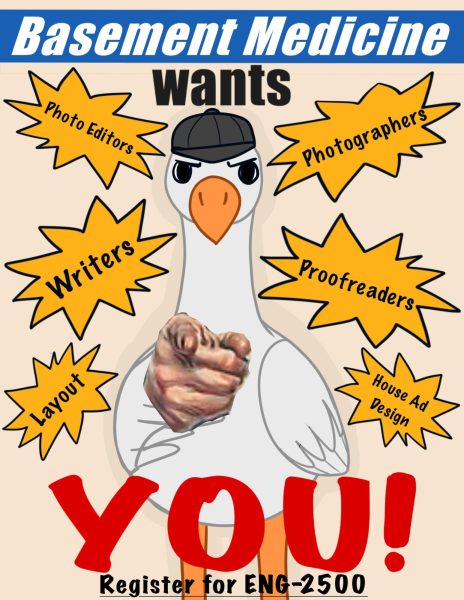Textbook Blues
Editor’s note: Ann Turkle has taught at Johnson State off and on since 1971. She also taught at Warren Wilson College where she directed the undergraduate writing program until 2007 and at Florida State where she earned her Ph.D. She held administrative positions in noncredit programs at UVM and served as Executive Director of the Vermont Higher Education Council in the 1980s.
I latch on to a student rapidly exiting at the end of my College Writing class. “Hey, Ralph, you didn’t turn in the reading response assignment!”
“Yea,” he shrugs. “I don’t have the book.”
My immediate internal response is, How do you expect to pass the class if you don’t have the required text?
As he hurries to leave he adds, “Hey, I’ll borrow it from my roommate. He has College Writing, too.”
I’ve had similar exchanges with my students many times in my past seven years as an adjunct at JSC, but it was only this fall that I’ve made it a point to ask, “Why don’t you have the textbook?” and students have answered, “I just couldn’t afford it.”
I had a similar exchange with a student who was looking very down and discouraged at the end of my seminar class. She told me she’d just had to borrow money from her roommate to help pay for a textbook in an introductory course that cost $200. The book, evidently new to the market, was not available used, and the instructor had not provided a copy to be placed on reserve in the library. The choice given the student was to buy the book or drop the course.
Students told me, when asked what was stressing them out, that the price of their required books was high on the list. This encouraged me to do an informal survey with more than forty first-year students. I learned a lot.
The Problem
In the students’ responses I read that the $200 textbook required for an introductory course was no anomaly. For some students, this was not a problem. They just asked their parents for more money. For others, it was difficult, in part because they hate to admit their money problems.
And my awareness of money issues broadened. I heard students deciding to drop art courses because, in addition to the course fee, they could not afford the materials they were expected to buy, sometimes totaling well over $100. Then other students pointed out high materials costs (everything from sheet music to hiking boots) that accompany many courses.
There seemed to be a disconnect between the reality faced by students, many of them on financial aid and taking out hefty loans, and the faculty, who are selecting expensive texts and costly materials.
I have some idea how this happens. Faculty are inundated with sample texts and the first concern that comes to mind is not how much will this cost the student but how well does this book serve the purpose of my class? Is it possible some of us never check the retail price of a text before we adopt it? Maybe. And we all suffer a bit from the illusion that ours is the most important class the student is taking. Don’t we want the best text and essential materials available for him or her?
I am not fond of textbook publishers. They seem to change editions on a dime. The recent flap over a McGraw-Hill caption that depicted African slaves as “workers” in a geography text used in Texas schools reminded me how malleable textbook truth may be.
Another issue that surfaced through the questionnaire was that some the students were quite savvy about buying their books. Benefitting from the advice of older siblings or college-attending friends, they prowled sources like CampusBooks.com that compare prices for new books, used books, rentals, and digital books. One text that cost $190 new could be found used, online, for as little as $9.00.
The text purchase playing field is very uneven. Some students have no one in their family with a credit card, making buying books online difficult. Others don’t have easy access to a computer, leaving digital books less attractive.
Existing Solutions
Books on Reserve
A friend who teaches at a state college in Pennsylvania said that their library buys a copy of every text that is adopted by faculty and the faculty member may then put that book on reserve for their students. Unfortunately, that is not the policy here. I heard that there is a department that does this, but that may be a pleasant rumor.
On the questionnaire, some students responded that every class they were taking had the primary texts on reserve while other students said none of their courses did. It is possible the students weren’t aware of the instructor’s policy. Could this information be included on the syllabus?
The Emergency Fund
Karen Madden, Director of Academic Support Services, told me that this semester of 16 requests made to the Emergency Fund (which is financed by fundraisers and donations), 14 were related to purchasing texts or art supplies. The upper reach of such assistance is $150 and that is the limit for the entire year. So, some welcome help here, but not a panacea.
Better Solutions
Pay attention to the price of text and material
At CCV faculty are encouraged in the Faculty Handbook to keep textbooks within a reasonable price range and to use open resources. CCV has created its own English Composition Reader, which costs $54 new, a better price than our Bedford Reader which is $80.25 new from our bookstore.
A stating point might be the faculty member’s being aware of how much the total text requirement for a class will be across all the available options, before text adoption.
An institution commitment to acquiring on reserve text books
What will it take to obtain a copy for library reserve of any text that is adopted?
We need to find out.
The creativity of our faculty, staff and students
Personally, I like Gina Mireault’s approach, but I know that’s not for everyone.
Our bookstore seems responsive to student and faculty needs. There are systems for creating course packets which Ron Osborne, the bookstore manager, can assist faculty in using. These packets can often be more focused and less expensive than standard texts.
There must be “best practices” around the adoption of text books and materials and the process of making them available to all students. I’d like to see this issue address as a priority, and so too, I believe, would the students.
An effort to avoid demonizing the textbook industry:
A close friend of mine, herself a creative writer, is the author of a respected creative writing text currently in revision. The text relies on the exemplary work of many writers, more than 50 in the book’s first edition. The author, who prefers to remain anonymous, said that those whose work is included in her text are paid, from her royalties, anywhere from a few hundred to thousands of dollars for the inclusion of their work.
The textbook author says that many teachers tell her they are grateful to have “the course in a box,” because it contains an instructor’s manual, readings, exercises, assignments, and the connective tissue that introduces the genres which include fiction, poetry, nonfiction and drama. She points out “Some teachers really want a book to drive the course.”
She also argues that authors whose work is downloaded are often not paid. And where are we as authors when we are not paid? A fair point. I’ve used her text and I appreciate the passionate thought and hard work that have gone in to it.




